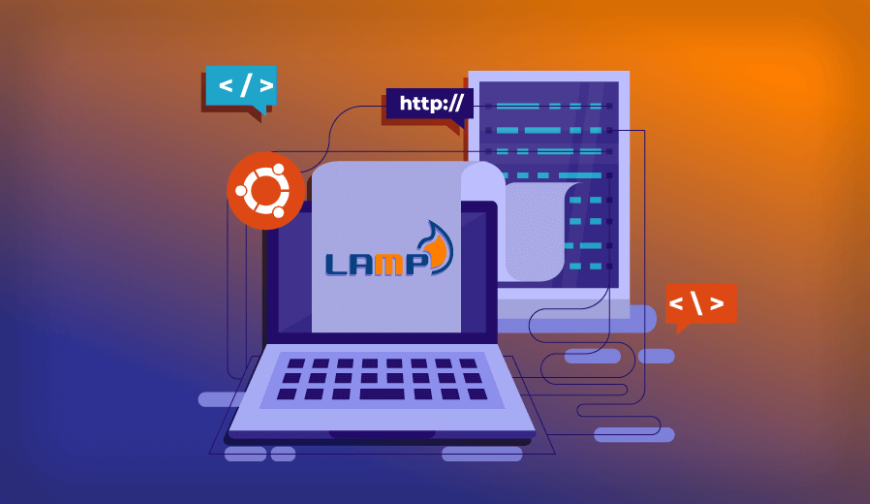PHP, standing for Hypertext Preprocessor, is a server-side scripting language that is particularly powerful for web development. When coupled with the LAMP (Linux, Apache, MySQL, PHP) stack, PHP becomes even more potent, enabling developers to create “Developing Dynamic Web Applications With LAMP” dynamic and interactive web applications with ease.
Introduction to PHP and LAMP Stack
What is PHP?
PHP is a widely-used, open-source scripting language that is especially suited for web development and can be embedded into HTML. It is versatile, easy to learn, and offers a plethora of functionalities for building dynamic websites and web applications.
Understanding LAMP Stack
LAMP is an acronym that stands for Linux, Apache, MySQL, and PHP/Perl/Python. It represents a set of open-source software components that work together to enable hosting dynamic websites and web applications.
Why PHP is Powerful for Web Development
Versatility and Flexibility
PHP is highly versatile, allowing developers to create a wide range of web applications, from simple websites to complex enterprise-level systems. Its flexibility comes from its vast array of built-in functions and extensions.
Large Community Support
One of the key strengths of PHP is its extensive community support. There are countless online resources, forums, and communities where developers can seek help, share knowledge, and collaborate on projects.
Cost-Effectiveness
Being open-source, PHP incurs no licensing fees, making it an attractive option for businesses and developers looking to minimize costs without compromising on functionality or performance.
Components of LAMP Stack
The LAMP stack comprises four main components:
Linux Operating System
Linux serves as the foundation of the LAMP stack, providing a stable and secure operating environment for hosting web applications.
Apache Web Server
Apache is the most widely-used web server software in the world, known for its reliability, scalability, and extensive customization options.
MySQL Database
MySQL is a popular relational database management system that seamlessly integrates with PHP, allowing developers to store and retrieve data efficiently.
PHP Programming Language
PHP is the scripting language that powers dynamic content generation in web applications, enabling seamless interaction between the frontend and backend.
Setting Up LAMP Stack for Development
Setting up a LAMP stack for development is relatively straightforward:
Installing Linux
Choose a Linux distribution that suits your requirements and install it on your server or local machine.
Configuring Apache
Configure Apache to serve web pages and handle HTTP requests by editing its configuration files.
Setting Up MySQL
Install MySQL and set up databases, users, and permissions as per your application’s requirements.
Installing PHP
Install PHP and configure it to work with Apache, ensuring that all necessary modules and extensions are enabled.
Developing Dynamic Web Applications with PHP
PHP enables developers to create dynamic web applications by:
Server-Side Scripting with PHP
Using PHP to generate dynamic content and interact with databases on the server-side.
Interacting with Databases Using MySQL
Utilizing MySQL to store and retrieve data, and executing SQL queries from PHP scripts.
Integrating Frontend and Backend
Creating seamless integration between the frontend (HTML/CSS/JavaScript) and backend (PHP/MySQL) components of web applications.
Handling User Input and Forms
Validating and processing user input submitted through forms, ensuring data security and integrity.
Advantages of Using PHP in Web Development
PHP offers numerous advantages for web development, including:
Rapid Development
PHP’s simplicity and ease of use enable developers to build web applications quickly and efficiently.
Scalability
PHP applications can easily scale to accommodate growing user bases and increasing traffic without sacrificing performance.
Security Features
PHP comes with built-in security features and functions to help developers protect against common web vulnerabilities.
Cross-Platform Compatibility
PHP applications can run on various operating systems and web servers, ensuring maximum compatibility and flexibility.
Best Practices for PHP Web Development
To ensure the success of PHP web development projects, developers should adhere to best practices such as:
Code Organization and Structure
Organizing code into modular components and following coding standards to improve readability and maintainability.
Secure Coding Practices
Implementing secure coding practices to mitigate risks such as SQL injection, cross-site scripting (XSS), and data breaches.
Performance Optimization
Optimizing PHP code and database queries for improved performance and faster load times.
Regular Updates and Maintenance
Regularly updating PHP libraries, frameworks, and dependencies to patch security vulnerabilities and improve functionality.
Popular Frameworks and Tools for PHP Development
Several frameworks and tools can streamline PHP development, including:
Laravel
A powerful MVC framework for building modern web applications with expressive syntax and elegant features.
Symfony
A high-performance PHP framework for web development, offering reusable components and best practices.
CodeIgniter
A lightweight PHP framework that is easy to learn and offers exceptional performance and flexibility.
PHPStorm
An integrated development environment (IDE) specifically designed for PHP developers, offering robust features for coding, debugging, and testing.
Case Studies of Successful PHP-Powered Websites
Several high-profile websites and web applications are powered by PHP, including:
The world’s largest social media platform relies heavily on PHP for its backend infrastructure and dynamic content generation.
WordPress
A popular content management system (CMS) built on PHP and MySQL, powering millions of websites and blogs worldwide.
Wikipedia
The world’s largest online encyclopedia is powered by PHP, enabling collaborative editing and content management.
Future Trends and Innovations in PHP Development
PHP development continues to evolve, with ongoing innovations and trends such as:
PHP 8 Features
The latest version of PHP introduces numerous enhancements and features, including improved performance, type safety, and error handling.
Integration with Emerging Technologies
PHP is increasingly being integrated with emerging technologies such as AI, machine learning, and blockchain to create more intelligent and secure web applications.
Microservices Architecture
Adopting microservices architecture allows developers to build scalable and modular PHP applications that can be easily maintained and updated.
Conclusion
PHP, combined with the LAMP stack, remains a powerful and versatile choice for developing dynamic web applications. Its ease of use, extensive community support, and rich ecosystem of frameworks and tools make it an ideal platform for building everything from simple websites to complex enterprise-level systems.
FAQs
- Is PHP still relevant in 2024?
- Yes, PHP continues to be a popular choice for web development due to its versatility, performance, and large community support.
- Can I use PHP for building mobile applications?
- While PHP is primarily used for server-side web development, it can be integrated with frameworks like React Native or Ionic to build mobile applications.
- What are the security risks associated with PHP development?
- Common security risks include SQL injection, cross-site scripting (XSS), and insecure file uploads. However, these risks can be mitigated through secure coding practices and regular updates.
- Which companies use PHP for their web applications?
- Many high-profile companies, including Facebook, Wikipedia, and WordPress, rely on PHP for their web applications.
- Is PHP suitable for large-scale enterprise applications?
- Yes, PHP can be used to build large-scale enterprise applications, especially when combined with modern frameworks and best practices for scalability and performance optimization.




